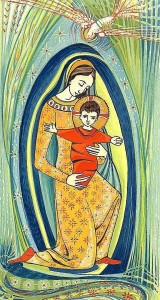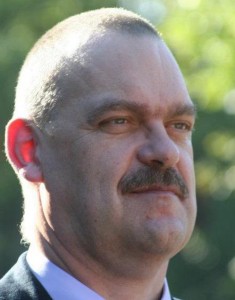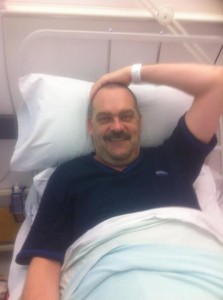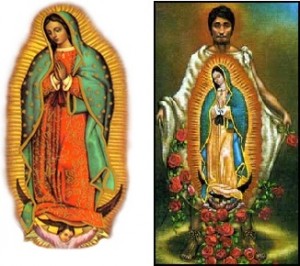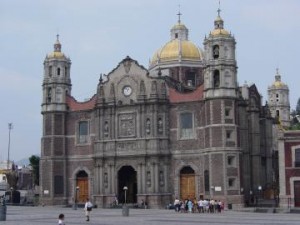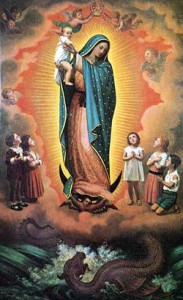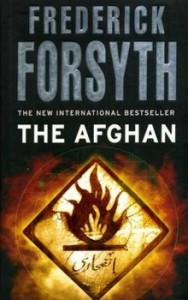In the novel, “The Afghan” by Frederick Forsyth, there are ruthless killings by those involved with ‘Al Qaeda’ of anyone who may stand in the way of their fanatical ideals. Basically, the novel is about an attempt to perpetrate even a greater atrocity than the destruction of New York’s ‘Twin Towers’, aiming at the deaths of thousands of Western people; in this, the fanatics hope to include many Christians.
The book is well written and well researched, and is a chilling read. Fanatical hatred, involving the suicide of Islamic extremists – in their hope for many deaths – is woven into the story. The ‘glorious’ deaths of these Islamist ‘martyrs’ will mark, for them, an entry into a supposed paradise, and their “glorious” self-sacrifices will be remembered in the annals of the Muslim world by fellow extremists for hundreds of years. Thank God, the book is fiction!
A Group of Orthodox Sisters
Daily, the world hears about such things in real life, usually not at such a dramatic level, but not that far removed. One of the latest incidents happened in Syria this week; armed men forced their way into a convent and kidnapped a group of helpless, Christian Orthodox nuns. People in the Christian world, and I dare say, many true peace-loving Moslems, are praying for their safe release, unharmed. During his Wednesday audience, yesterday in Rome, Pope Francis asked people to pray for the sisters.
Never in the life of the Church has there been such persecution of Christians, and those who know Church history, are aware that the ‘Blood of the Martyrs is the Seed of the Church’. Martyrs, in the true sense of the word, are those who die for love – love of God, and others – for that ideal. They come from all religions, and none. Most certainly, they are not diabolical, ‘imposter suicide’ martyrs, who die for an ideal of hatred, and the killing of other human beings. A large number of those who are murdered for their beliefs are Christians in today’s world. We know there are many others, too – innocents killed of all religions; fellow Muslims are often known to have killed others of their own faith, for example. Similarly, there may be fanatical Christians, who cannot be called true disciples of Jesus, involved in such evil deeds, somewhere on our earth.
It is true that some Christians do, ruthlessly, kill. One only has to look at the Mafia, or the IRA movement. Then, take the very rich people, especially those of the world-wide conglomerates, who uphold economic systems that lead to perpetual inequalities of life, especially in the ‘Third World’ and which result in the dying of simple, innocent people from lack of water, food and medicines. These economic systems have built-in structures, often supported by the ‘Western Christian World’ in collusion with those of non-Christian religious persuasions, in the Middle and Far East.
Christian teaching states clearly, and consistently, that it is a grievous sin to kill others; digging just a little deeper, it is true that there are many different interpretations of the teachings of Mohammed, for the Islamic world, where, I suspect, one finds the very same parallel teaching about murder, within that Faith, too. Our Pope Francis, previous Popes and others in the Christian world, condemn unjust economic systems that, more or less, allow the wealthy countries to live so well, while millions in the undeveloped world are dying of disease, hunger and thirst. Things could be very different, and it is not an impossible, or idealistic dream that, one day, all human beings might live in a more united world. We have to do something about it but it will be impossible on our own. We must obtain the help and support of like-minded people. Such people are the silent majority, in our world, but it is surely time to get organised and so overcome the evils around us.
The title for my blog attempts to explain why, in general, Christians are so meek? We are disciples of Jesus, the ‘Word of God’ made flesh, as we will celebrate, once again, at Christmas with awe and thanksgiving. That’s fine, BUT, it is not enough just to remember that ‘baby’ and then continue in our self-centred ways, enjoying the good things of life, not living as disciples. The fact is that Jesus, risen from the dead, is alive with us today, sharing his Holy Spirit with us, to lead us on our journey through this world to God the Father. It is the same journey Jesus made, two thousand years ago, and it is lived again, by each one of us, personally, and in our togetherness in the Body of Christ. As we await, joyfully, the celebration of Christmas, day-by-day, we let the risen Lord guide us in the detail of our life, so that we may be made worthy to celebrate, with friends and family, the wonderful mystery of the Incarnation.
After the glory of the resurrection, Jesus, the Word of God, through whom all things are made, has taken unto himself the whole of creation, everything in the heavens, in the earth and in the underworld. In the very beautiful ‘Alleluia Chorus’ of the ‘Messiah’, the composer, George Frederick Handel created some of his most wonderful music, expressing this truth in words of Scripture:
“Hallelujah! for the Lord God omnipotent reigneth. The kingdoms of this world are become the kingdoms of our Lord, and of His Christ: and He shall reign for ever and ever. Revelation 19:16 16. . . . KING OF KINGS, LORD OF LORDS …”
Should anyone feel the need to prepare, properly, for Christmas, I recommend no more profitable way than to spend an afternoon, listening to, and taking in, Handel’s Messiah. It is an exceptional piece of music, a meditation that outlines, in a wonderful way, the plan of God for humanity, in which each disciple participates.
Through our baptism and our faithful discipleship, we Christians share in the glory that Handel’s music proclaims. Christians have a dignity that could never have been invented, save by God himself. We have the life of the risen Jesus already with us. Our lives, and deaths, contribute to the same plan of God, as fulfilled by Jesus and in which we share already, albeit ‘as in a glass, darkly’ through the majestic dignity of Jesus himself. Our life, as Christians, is hidden with Christ, in God. Within us, in Him living in us, is also the whole of humanity, the whole cosmos, all that was ever created. This is why we have the mark of joy, and love, and hope, as Christians.
 |
The key to this life of love, leading to the unification of the world, is the Cross, the glory of Jesus, as man, on this earth. It means the loving acceptance of all that brings the cross into my life today, in me, in others, in our families, our country and our world. Suffering, though it does not feel like it, has a loving purpose.
The words written by St. Paul in his letter to the Philippians take on a new meaning in this light:
“Though being divine in nature,
he did not claim in fact equality with God,
but emptied himself,
taking on the nature of a servant, made in human likeness,
and in his appearance found as a man.
He humbled himself by being obedient to death,
death on the cross.
That is why God exalted him
and gave him the name which outshines all names,
so that at the Name of Jesus all knees should bend
in heaven, on earth and among the dead,
and all tongues proclaim that Christ Jesus is Lord,
to the glory of God the Father.” (Phil 2: 6-11)
If all this is ours, is it any wonder that Christians are pro-actively meek, doing all they can to follow their Master and accepting all the challenges of life, from youth to old age joyfully. A Very Happy Advent to all.
Father Jonathan
